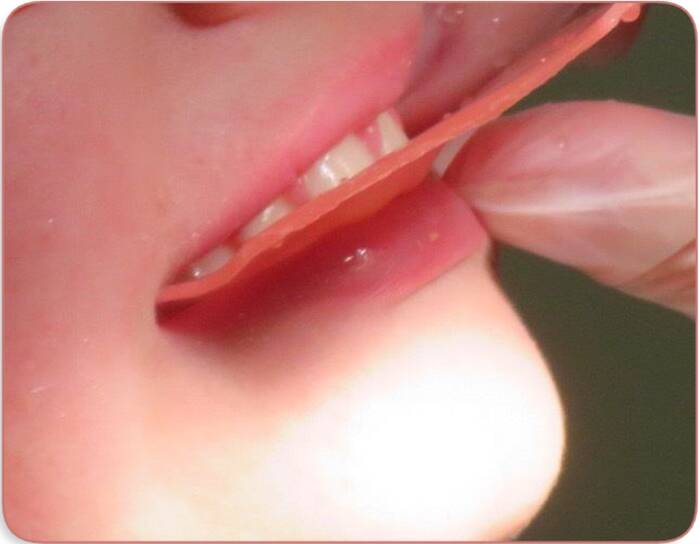How to regrow bone loss from periodontal disease naturally? What are the symptoms of dental bone loss? How can I prevent jawbone loss? What are the treatments that slow down bone loss? How can the jawbone be preserved after dental extraction? And finally, what is the average cost of dental bone regeneration?
I. How Can the Jawbone Be Lost?
Bone loss around a dental implant can have several causes. Among the most common are accidents.
It can also result from microbial gum disease, better known as periodontitis.
Indeed, following the extraction of a tooth, the mandibular and maxillary bone atrophies in width and height.
II. Symptoms of Dental Bone Loss
The most visible symptom is tooth mobility. Since the bone has become weak, the tooth is no longer held in place.
When the patient eats, he feels that his tooth is moving. It is also noticeable that the person suffers from gingivitis.
The gums are swollen and may even bleed when brushing for example.
In addition, the gums may also recede. In other words, the gum line recedes and the roots of the teeth are exposed.
Signs of bone loss include bad breath and the presence of periodontal pockets that can be detected with a probe.
III. How to Prevent Alveolar Bone Loss?
The best way to prevent bone loss around a dental implant is to respect a set of precautions.
Good oral hygiene is the basis. You should keep the pad on the socket after the tooth is removed and change it for at least two hours.
You should also avoid rinsing your mouth too much, spitting, running your tongue over the extraction site, chewing at the extraction site, and smoking.
When brushing your teeth, avoid rubbing near the socket.
IV. How to Regrow Bone Loss from Periodontal Disease Naturally?
There are many ways to strengthen the jawbone naturally. But to date, we can’t tell you exactly if these methods work or not. Among them, you have:
- Guided bone regeneration. Bone material is inserted and covered with a membrane. The membrane is used to control the rapid growth of soft tissue that grows faster than bone.
- Autogenous bone. This is the most commonly used technique for reconstructing bone.
- Xenogenetic and allogeneic materials. This is a technique that tends to disappear more and more. In fact, by using xenogenetic material, animal bones are used, which can be the source of disease transmission.
- Bone splitting. This technique is used for narrow bone ridges in the jaw. If possible, an implant can be inserted.
- Reconstruction of the jaw with dental implants. In the past, prostheses were used, but over time, prostheses have been replaced by implants due to the high failure rate of the first method.
V. Treatments that Slow Down Bone Loss
In the past, to slow down bone loss and even strengthen the jawbone, treatments were heavy and had to be taken for life.
Nowadays, treatment is taken over three to five years. But it can be repeated or improved years later. According to some experts, half of the patients abandon the treatment one year after the prescription.
And among the most common treatments, you have:
- HRT, menopausal hormone therapy. This is a treatment that protects women between the ages of 50 and 60 from associated menopausal disorders.
- Raloxife has a remarkable preventive effect, but more so for vertebral fractures. This treatment reduces the risk of breast cancer by more than 50%.
- Bisphosphonates slow bone degradation and reduce the risk of fracture. However, patients do not like this treatment because of the side effects. These side effects are rare but serious and affect the digestive, renal, cardiac, and muscular systems.
- Denosumab is an alternative treatment that can be taken in place of bisphosphonates. It is an inhibitor.
- A vitamin D and calcium supplement. The two are complementary. Since vitamin D ensures the fixation of calcium. However, this treatment is not sufficient for active people with osteoporosis.
- Another treatment is being validated in Europe and the United States. It is used more to prevent hip fractures. It is Odanacatib.
VI. Why Bone Regeneration?
Bone regeneration to prevent jawbone collapse is important for several reasons.
Firstly, for the support and regeneration of the jawbone when dental implants are to be placed.
Especially when the bone mass is not sufficient to guarantee a durable and stable anchorage of the tooth. It is also used to keep teeth mobile in the bone after periodontitis.
Secondly, bone regeneration is important to rebuild the jawbone when there has been bone loss and to remedy the lack of bone in the maxillary sinus.
Finally, it allows the restoration of bone that has been damaged as a result of cyst removal and tooth-root extraction.
It also maintains the volume of soft and hard tissue after extraction.
VII-How to preserve the jawbone after a tooth extraction?
To preserve the jawbone after tooth extraction and to prevent the jawbone from collapsing, the dentist or surgeon can perform preservation of the alveolar ridge.
This is done by filling in the socket left by the missing tooth and allowing it to heal for several months.
The socket can be filled with animal, synthetic or human bone and covered so that the gum does not grow.
The socket is covered with materials that can be surgically removed or absorbed by the body over time.
VIII. Price of Dental Bone Regeneration
A dental bone graft costs between $1,000 and $3000 on average. This is an out-of-nominal procedure.
In other words, this operation is not covered by health insurance.
Before choosing a health care professional for this operation, it is strongly recommended to compare rates and services.
Useful Links:
What You Need To Know About A Dental Bone Graft
How to eat with dentures and braces for the first time?
How Can I Sleep with Unbearable Tooth Pain?
My Braces Hurt So Bad I Can’t sleep, How to Calm the Pain?

